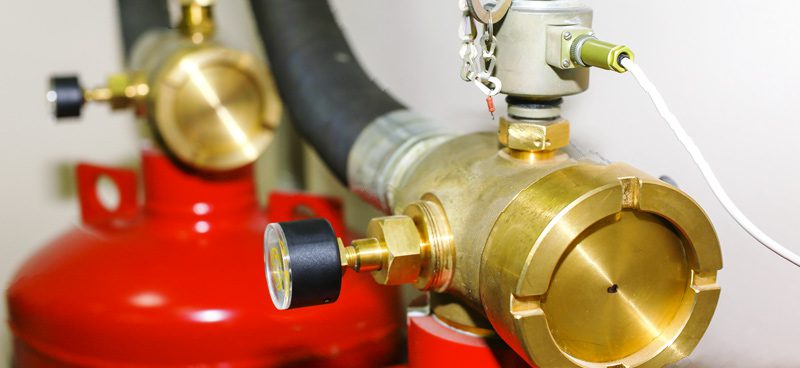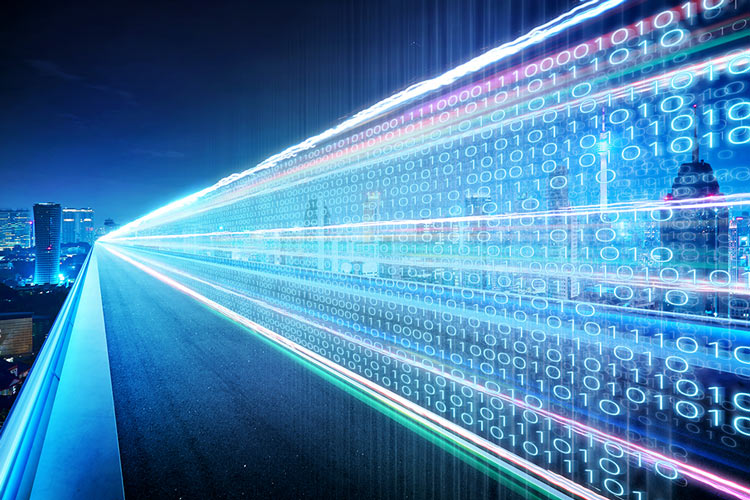On average, a 14,000 square foot data center moves a 2,400kW electrical load and 700 tons of heat every single day. This places incredible electrical and mechanical pressures on circuits and opens a data center up to significant fire risks. To compound this problem, data centers pose unique challenges for fire suppression systems. Up until the mid-1990’s Halon 1301 was the primary substance used for fire suppression in data centers. While this chemical did not produce water damages to the center, it was highly damaging to the environment. As a result of the negative impacts on the environment, Halon production was halted in 1987 with the signing of The Montreal Protocol. Since then, inert gasses like INERGEN have replaced Halon as the go-to fire suppression agent in data centers.
Fire Suppression Challenges In Data Centers
Data center fire suppression offers a host of unique challenges. The majority of data centers are comprised of hot and cold aisles. Each of these aisles is separated from one another in an effort to contain the space’s airflow. As a result, data center fire suppression systems must be able to effectively prevent and extinguish fires in each of these contained spaces, often at the same time. Furthermore, data and telecommunication centers are full of personnel and, thus, require non-toxic suppressive gasses to ensure each worker’s brain and respiratory functioning is kept at a level optimal for evacuation.
The Critical Nature Of INERGEN Fire Suppression In Data Centers
The goal of fire suppression in data centers goes beyond putting out fires. Data centers are regarded as “mission critical” facilities. This title refers to the need for these facilities to run 24 hours a day, every day, without interruption to service. As a result of this “mission critical” status, a single day of downtime for the center can have global implications. In fact, the National Archives and Records Administration reports that 93% of companies that suffer a loss of data for ten days or more (often as the result of a fire) file for bankruptcy within the year. A fire suppression system that is suitable for data centers must go beyond extinguishing fires. The system must be able to get a data center back up and running within hours. Extended downtime can result in losses in productivity, customer disruption, reputation damage, repair costs, loss of data and records, and lawsuits. INERGEN fire suppression has become the longest surviving Halon replacement currently on the market.
Understanding INERGEN Fire Suppression For Data Centers
What is INERGEN fire suppression and how does it work? On the most basic level, INERGEN fire suppression uses inert gasses to lower a room’s oxygen concentration below combustion level. INERGEN is a blend of nitrogen, oxygen, and carbon dioxide that works to extinguish and prevent re-ignition of a fire without putting personnel, equipment, or the environment at risk. INERGEN gases go beyond being non-toxic – they actually improve the physical and mental functioning of staff by increasing the levels of carbon dioxide in a room from 1% to 4%. As a result of this carbon dioxide increase, individuals within the data center experience increased respiration rates and increased ability to absorb oxygen into the bloodstream.
Types Of INERGEN Systems
There are three types of INERGEN fire suppression systems. They are as follows.
- INERGEN Premier Gaseous Fire Suppression System. An inert gaseous fire suppression system suited for large “multiple area protection.”
- INERGEN Conventional Gaseous Fire Suppression Systems. An inert gaseous fire suppression system best suited for medium-sized “business critical areas.”
- INERGEN Direct Orifice System Gaseous Fire Suppression. An inert gaseous fire suppression system designed specifically for very small, “business critical areas.” The Direct Orifice System is currently the most cost-effective solution for facilities with valuable and sensitive electrical equipment.
INERGEN Fire Suppression Systems For Your Data Center
INERGEN fire suppression systems are best suited for laboratories, telecommunication centers, data centers, control rooms, and archives. While installation and maintenance, costs can run higher than the alternative fire control systems on the market, avoiding the astronomical costs of prolonged downtime after a fire quickly negates those costs. Data centers in need of fire suppression system installation are advised to contact a reputable INERGEN fire suppression installation specialist today.
Ready to See How Volico Data Center Can Help You?
Got questions? Want to talk specifics? That’s what we’re here for.
Have one of our friendly experts contact you to begin the conversation. Discover how Volico can help you with your Data Center needs.
• Call: 888 865 4261
• Chat with a member of our team to discuss which solution best fits your needs.








